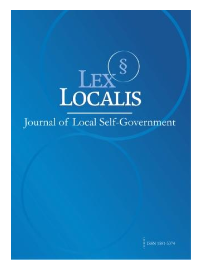“THREADS OF PROSPERITY”: A HOLISTIC VIEW OF THE HANDLOOM INDUSTRY IN ASSAM
DOI:
https://doi.org/10.52152/wfd8yj57Keywords:
Handloom, Women empowerment, Socio-Economic, Weavers, RuralAbstract
The handloom industry boasts a rich history, an age-old practice deeply rooted in human existence. India's handloom heritage is particularly renowned and has a deep cultural significance, especially in the northeastern regions where weaving once influenced bride selection criteria in ancient times. The eight states of North-East India are celebrated for their unique handloom creations, deeply interwoven with their cultural heritage and everyday life.
Assam, in particular, stands out with 10.9 lakh weaver households out of the 26.73 lakh in the region. An impressive 92% of the handloom workforce in Assam is comprised of women, highlighting their crucial role in this industry. This significant female participation highlights the handloom sector as a vital source of empowerment and economic opportunity for women, making it an essential aspect of Assam's socio-economic landscape. The industry's mainly rural-centered nature has fostered development and economic stability in these areas, providing a sustainable livelihood for many families.
Despite its significant contributions, handloom weaving is often considered a secondary occupation, typically following agriculture as the primary source of livelihood. This dual role is crucial for rural households, enabling them to diversify their income sources and thus provide financial flexibility and stability. In regions where agricultural yields are subject to seasonal fluctuations and uncertainties, handloom weaving serves as a vital supplementary income stream.
By supporting rural households in this way, the handloom industry not only preserves traditional crafts and cultural heritage but also plays a critical role in sustaining the rural economy. The dual engagement in agriculture and weaving reflects the adaptability and resourcefulness of these communities, allowing them to thrive despite the challenges posed by an unpredictable agricultural sector.
This study aims to enlighten the handloom industry's contribution to both the status of women and the overall economic fabric of the state and the country. It provides a comprehensive analysis of production, the demographics of weavers, and the industry's impact on the state. By examining production patterns and workforce trends over recent years, the study underscores the enduring importance of the handloom industry while exploring its evolving dynamics.
Downloads
Published
Issue
Section
License
Copyright (c) 2025 Lex localis - Journal of Local Self-Government

This work is licensed under a Creative Commons Attribution-NonCommercial-NoDerivatives 4.0 International License.








